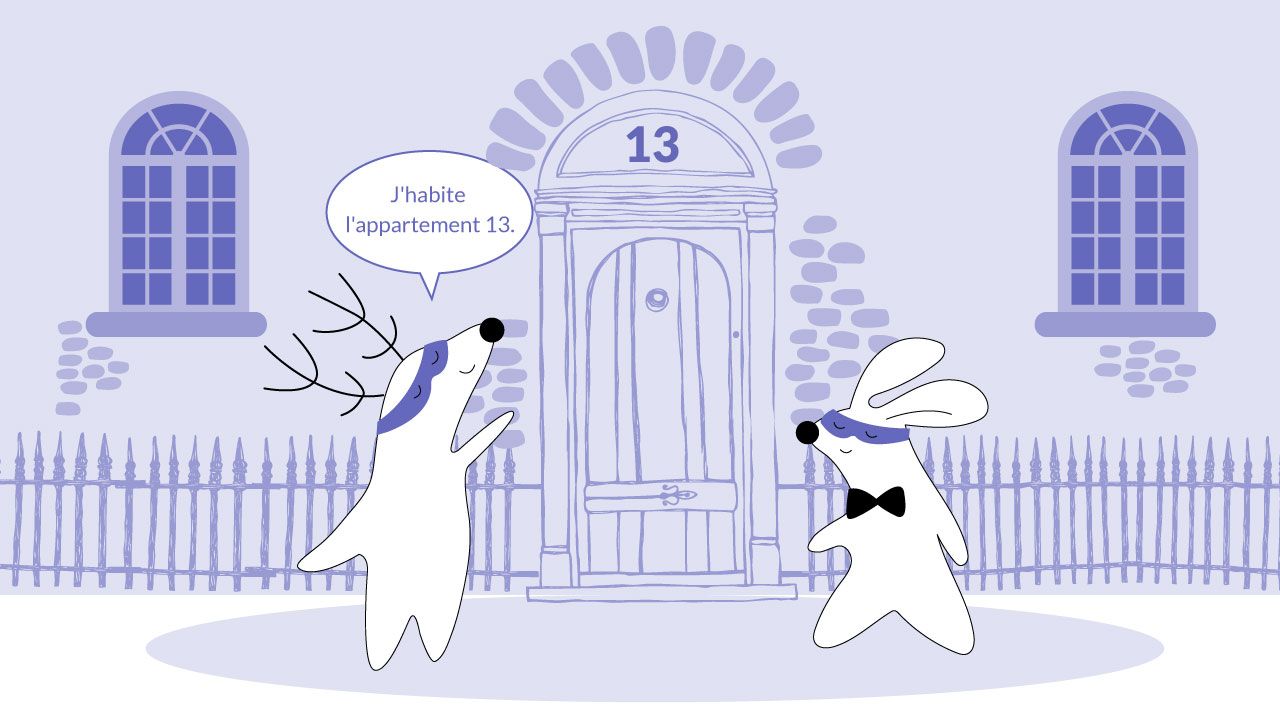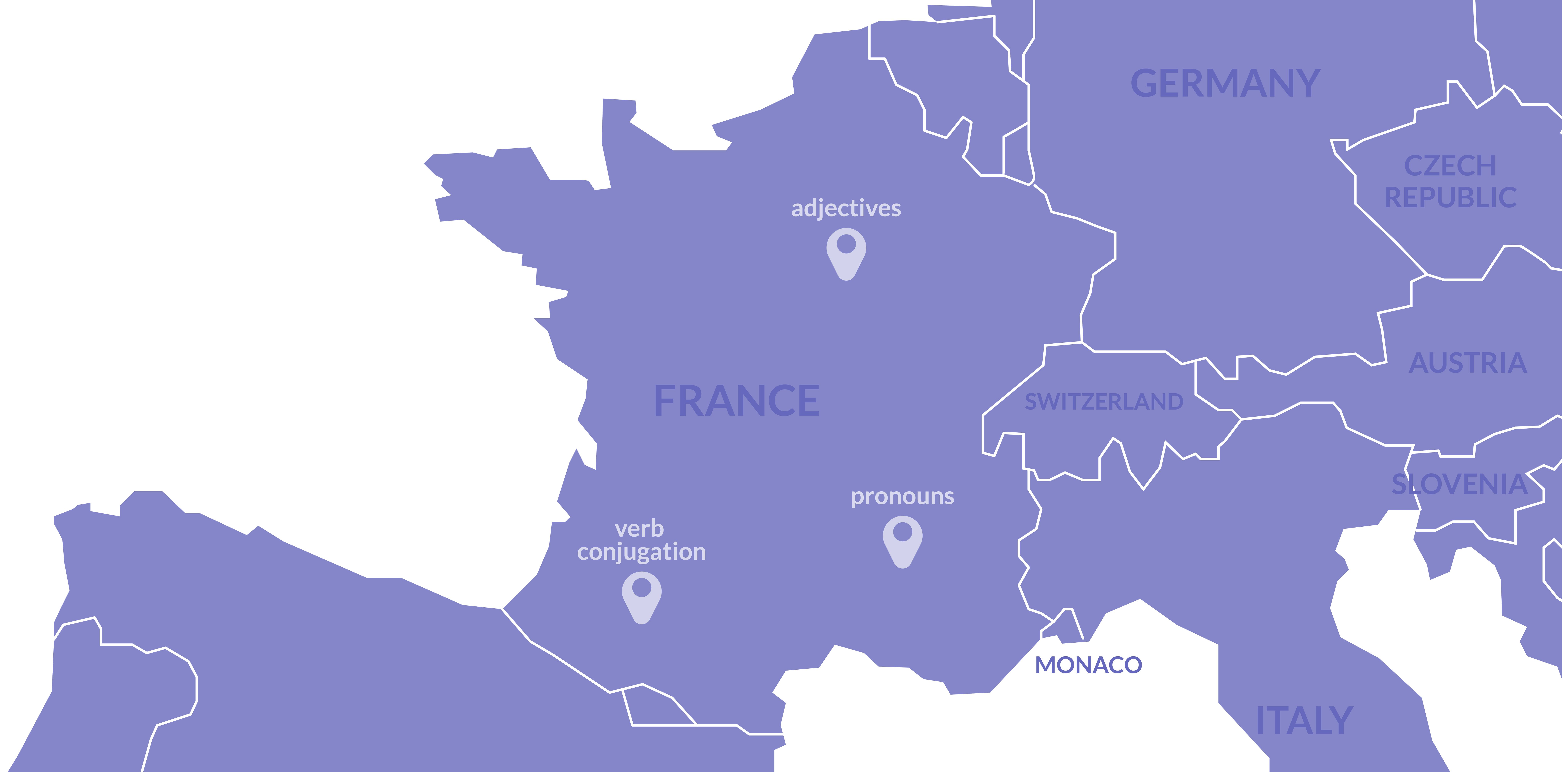
As a second-language learner, you may be tempted to skip learning French prepositions. After all, they don’t seem that important, do they? And there are so many of them! Well, you would be wrong to do that. Learning how to use prepositions correctly is one of the most important things you can do to improve your French communication skills.
Let’s take a look at why prepositions matter so much, discover how and when to use the most common ones, and learn some important rules. Read on to become a pro at French prepositions.
Learn French with Langster
Why Do Prepositions Matter?
As you may know, prepositions are used to indicate the relationship between nouns and other words in a sentence. In English, we use prepositions such as “of,” “to,” and “with” quite frequently. But did you know that in French, there are dozens of prepositions to learn and use?
The good thing is, if you have a basic understanding of English prepositions, it will be much easier to understand how to use them in French. Most French prepositions have direct alternatives in English, like "dans" for "inside."
The bad thing is, many other prepositions can have various meanings depending on the word they are used with, and that can make choosing the right preposition quite tricky.
Fortunately, with some practice and knowledge of French grammar rules, it shouldn't be a problem to master the use of the most common French prepositions. We’ll help you get a grasp on them.
4 Most Common Prepositions
There are dozens of prepositions in the French language, and all of them can be used in very different situations. It can be helpful to start with the most common ones.
So, here are the four French prepositions that you should make sure to learn first. Let’s take a look at them in detail:
À
À is one of the most common French prepositions, and it can be translated as "in," "at," or "to." It can be used either directly before a noun or before the article preceding this noun. Most often, it is used to indicate location or destination:
French
English
Je vais à Paris.
I'm going to Paris.
Je suis à l'école.
I'm at school.

However, it also has a lot of other uses. You would need it to:
- show distance, similar to the English "from" or "away"
French
English
Nous sommes à 20 minutes de notre hôtel.
We are 20 minutes from our hotel.
- talk about a certain point in time
French
English
J'ai commencé l'université à 17 ans.
I started university at 17.
- indicate a range, as in "to" (in combination with the preposition de)
French
English
Je travaille de neuf à cinq.
I work from nine to five.
- express the purpose of something
French
English
Nous avons quatre verres à vin.
We have four wine glasses (glasses for wine).
- show a characteristic, manner, or style of something
French
English
Je n'aime pas porter des robes à manches longues.
I don't like wearing dresses with long sleeves.
- talk about possession
French
English
Cette voiture est à moi.
This car is mine.
À with Grammar
This preposition is also used in several grammatical contexts.
- In the passive infinitive
French
English
J'ai un film à regarder.
I have a movie to watch.
- With certain verbs that require this preposition. For example:
French
English
Je dois parler à mon professeur.
I need to talk to my teacher.
- With certain adjectives used with the personal verb être
French
English
Je suis déterminé à finir ça avant demain matin.
I'm determined to finish this by morning.
De
The French preposition de is used in many contexts, but most often to indicate a change or movement from one state to another. It can be translated as "from," "of," or "about." De can be followed by a noun or its determiners (such as an article).
French
English
Il vient de Paris en voiture.
He's driving from Paris.
However, as one of the most common French prepositions, de also has other functions.
You can use it to:
- describe a definite feature
French
English
Elle a une belle fille de 7 ans.
She has a beautiful 7yearold daughter.

- show possession when you're using a name or noun
French
English
C'est la voiture de mon étudiant.
This is my student's car.
- talk about the contents of something, similar to the English "of"
French
English
J'ai un verre de vin à la main.
I have a glass of wine in my hand.
- describe a means or manner
French
English
Elle m'a regardé d'un air entendu.
She looked at me knowingly.
- show the starting point, as in "from," or the range (in combination with à)
French
English
J'ai dormi de dix à six heures.
I've slept from ten to six.
This preposition is also used after merci, similar to the English "for."
French
English
Merci de m'avoir aidé.
Thank you for helping me.
De with Grammar
Just like some other prepositions, de can be used in several grammatical constructions.
- In certain passive voice constructions to present the agent
French
English
I'm very loved by my parents.
Je suis très aimé de mes parents.
- With certain verbs. For example:
French
English
Je ne veux pas parler de l'école.
I don't want to talk about school.
- With certain adjectives used with the personal verb être
French
English
Je suis si fière de toi !
I'm so proud of you!
Prepositional Contractions with À and De
When à or de are followed by the definite article le or les, they must contract. Here is how it happens:
- à + le = au
- à + les = aux
French
English
Je suis allé aux États-Unis.
I went to the United States.

- de + le = du
- de + les = des
French
English
Je sais que tu as du courage.
I know that you have courage.
However, please note that definite articles la and l’ don’t require contraction.
French
English
Je n'aime pas aller à l'école.
I don't like going to school.
Nous sommes loin de la plage.
We are far from the beach.
En
"In" in French has many translations, and this is one of them. This preposition is used mainly to indicate a location, or the position of something. You can use it before both singular and plural nouns.
For example:
French
English
Je suis en France.
I'm in France.
Il est en classe.
He is in class.
The preposition en can also be used to:
- indicate the point or period of time
French
English
Nous voyageons en avril.
We travel in April.
- describe something, similar to the English "of"
French
English
C'était une maison en bois.
This was a wooden house.
- show transformation, similar to the English "into" or "in"
French
English
J'ai déchiré le papier en deux.
I ripped the paper in two.
- talk about means of transportation, similar to the English "by"
French
English
J'adore voyager en train.
I love traveling by train.
- provide an analogy, similar to the English "as"
French
English
Il me l'a donné en cadeau.
He gave it to me as a gift.
En and Grammar
This preposition is used in two grammatical contexts.
- To form a gerund, in combination with a present participle
French
English
Il a parlé en mangeant.
He spoke while eating.
- With certain French verbs that require the usage of this preposition. For example:
French
English
Tu n'as pas besoin de croire en moi.
You don't have to believe in me.
Dans
Dans is a preposition that can be translated as "in" or, more distinctively, "inside." Just like en, it is a location marker, and differentiating between them can often be a tad challenging. Fortunately, the more you read and speak French, the clearer their differences will appear for you.
French
English
Le chat est dans la boîte.
The cat is in the box.
Elle pleure dans ma salle de bain.
She's crying in my bathroom.
As you can see, this preposition also can't be used directly before a noun – instead, it's followed by some kind of a determiner, whether an article or a possessive adjective.
Dans can also have several other meanings and can be used to:
- talk about location related to the transport, similar to the English "on"
French
English
Je ne peux pas parler, je suis dans le bus.
I can't talk, I'm on the bus.
- show destination, similar to "for" or "into"
French
English
Nous sommes allés dans la forêt.
We went into the forest.
- express a figurative location, similar to "in" or "under"
French
English
Nous devons attendre dans cette situation.
We need to wait in this situation.
- mention origin or provenance, just like the English "from" or "out of"
French
English
S'il vous plaît, buvez le lait dans le verre.
Please, drink the milk out of the glass.
- talk about the period or amount of time, similar to the English "in" or "during"
French
English
Je serai là dans cinq minutes.
I'll be there in five minutes.
Ils étaient très populaires dans les années soixantes.
They were very popular in the sixties.
Dans with Verbs
Some verbs also require the preposition dans to be put before the noun they are used with. In this case, the meaning of the verb can slightly change. For example:
French
English
Ça a coûté dans les 20 dollars.
It cost about 20 bucks.
J'ai copié le devoir dans le manuel.
I copied the assignment from the textbook.
Prepositions with Location
As you can see, all the prepositions above can be used with location, and there are many more prepositions of place. It can be quite tricky to determine which preposition to put where, so here are some examples with contextual explanations.
These should help you understand a bit better in which context to use which preposition.
- J'habite à Paris. – “I live in Paris.” This is the most common way to say that you live in a certain city.
- J'habite l'appartement 13. – “I live in apartment 13.” This is a way to say that you live somewhere, with an accent on habitation or occupancy.
- J'habite dans le Maine. – “I live right in Maine.” The accent here is put on proximity.
- J’habite en France. – I live in France.” We use the preposition en with countries.

Other Important French Prepositions
Of course, besides the prepositions mentioned above, there are many other common ones. Here are some other prepositions and prepositional phrases that every beginner should know:
French
English
avec
with
à côté de
next to
à droite
on the right
à droite
on the left
au milieu de
in the middle of
autour de
around
au-dessous de
below, but not directly beneath
au-dessus de
above, but not directly on top
chez
at, to (someone’s place)
contre
against
en dehors de
outside of
en face de
facing, directly across
entre
between
grâce à
thanks to
par
by, per
parmi
among
pour
for, because of
près de
near
sans
without
sous
under
sur
over
par
through
vers
towards
Bottom Line
Learning the different French prepositions might seem like a daunting task, but with patience and practice, it can be extremely useful. Whether you work writing or speaking, knowing your prepositions will help you construct more accurate sentences and convey your message better.
Plus, learning about them is also a great way to strengthen your knowledge of the language in general! So, what are you waiting for? Start practicing today (for example, with Langster), or visit our grammar page to learn more. Good luck!









